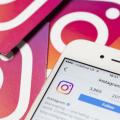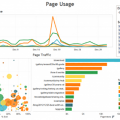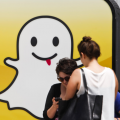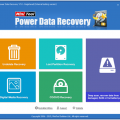The news of rapid increase in adoption of programmatic advertising in the US has been doing the rounds for quite some time now. With more and more marketers seeking to run ad campaigns in multiple formats and across a variety of channels, emarketer predicts that more than two-thirds of display ad expenditure in the US will be programmatic in 2016. This year, the ad expenditure is predicted to reach $22.10 billion, increasing by 39.7% compared to that of last year.
Among marketers, there is growing affinity towards programmatic buying of media spaces. It has been brought about by various factors such as the technology’s undisputable efficiency, its unique ability to match consumer data with ad campaigns, improved measurement tools, advanced settlement of pricing, and fraud mitigation.
Marketers from the US are constantly exploring programmatic technology. As comfort with the technology is increasing, more and more publishers are offering a larger share of their inventory for buying. Various studies and surveys have brought to light the fact that the marketers here are the quickest to create programmatic tech partnerships, taking a maximum of only six months. Programmatic media buying seems to have reached a mature stage in the country; advertisers and publishers are able to work out guarantees and deals, which are private and share characteristics with conventional direct-sold contracts.
TV broadcasters who initially had been hesitant to adopt programmatic buying are increasingly embracing the technology. They have learnt it the hard way that majority of their target groups, especially the younger generation, prefers spending more time on digital media than watching conventional TV.
In an effort to keep their gross rating points boosted, broadcasters today are making up for the lack of eyeballs on TV with digital content, fueled by programmatic advertising techniques.
The spend on programmatic advertising is estimated to be about 67.0% of the total digital display-ad spend in the US in 2016, and it is expected to escalate to 72.0% in 2017. It is predicted that out of the total US programmatic dollars spent throughout 2018, Facebook will have the largest share, generating 43.7% of the total revenue. Following Facebook will be Google, at a fairly distant second position, with a relatively tiny share of 9.4%.
The advent of programmatic mobile is opening up a lot more opportunities for brands to reach out to their existing and potential mobile-savvy customers. Projections made by emarketer show that such spends will reach $15.45 billion in the US, comprising 69.0% of programmatic digital display ad spend in 2016.
Realizing that more than 50% of members on LinkedIn access their accounts on mobile, and that mobile can bring in most of the marketing revenue, the company has recently made a quick shift to programmatic. By using this technology, LinkedIn aims not only to reduce costs but also provide service to the advertisers the way they want on the device (that is mobile) where most of their innovations unfold.
By 2017, mobile is predicted to capture about three-quarters of the programmatic ad expenditure in the US, while the rest one-quarter will represent the share of desktops. The country is expected to see steady growth in programmatic technology throughout 2018, a substantial part of which will be driven by mobile. Mobile programmatic ads had taken over desktop last year itself.
The year 2016 will prove to be crucial for programmatic video ad campaigns in the US. The total spend on programmatic video ads is expected to rise to 60.0% of the total digital video advertising expenditure. Youtube, one of the biggest drivers of programmatic video advertisement expenditures, has been assessed to generate about 21% of advertisement revenues from digital videos in the US this year.
The coming year, 2017, is going to be one of programmatic mobile video ads. It is going to be phenomenal since the ads on mobile are predicted to overtake desktop ads for the first time in US. Estimates say that the technology will add up to 51% of total programmatic ad spend in the country.































